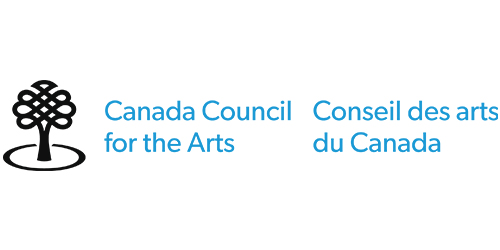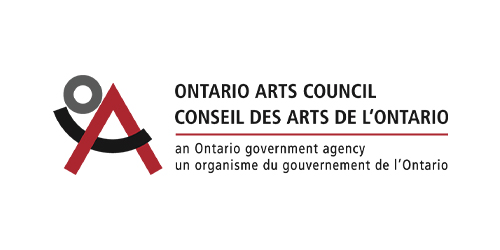Tafelmusik Baroque Orchestra
Directed by Julia Wedman
Samuel Mariño, male soprano
Live performances:
April 28, 2023 8:00 pm at Jeanne Lamon Hall, Trinity-St. Paul’s United Church
April 29, 2023 2:00 pm at Jeanne Lamon Hall, Trinity-St. Paul’s United Church
Program
George Frideric Handel
1685–1759
Overture to Il Trionfo del Tempo
Motet “Saeviat tellus inter rigores”
Concerto grosso in F Major, op. 6, no. 2
Andante larghetto – Allegro – Largo – Allegro, ma non troppo
Aria “Quella fiamma” from Arminio
Intermission
Antonio Vivaldi
1678–1741
Sinfonia to L’Olimpiade: Allegro–Andante
Aria “Vedrò con mio diletto” from Il Giustino
Concerto for cello in E Minor, RV409
Adagio/Allegro molto – Allegro
Keiran Campbell, cello soloist
Alessandro Scarlatti
1660–1725
Johann Adolph Hasse
1699–1783
Aria “Caldo sangue” from Il Sedecia Re di Gerusalemme
Aria “Morte col fiero aspetto” from Marc’Antonio e Cleopatra
Johann Georg Pisendel
1688–1755
G.F. Handel
Concerto in E-flat Major
Aria “Non sarà poco” from Atalanta
Tafelmusik Baroque Orchestra
Violin 1
Julia Wedman, Chloe Fedor, Geneviève Gilardeau, Cristina Zacharias
Violin 2
Patricia Ahern, Elizabeth Loewen Andrews, Christopher Verrette
Viola
Patrick G. Jordan, Brandon Chui
Violincello
Michael Unterman, Keiran Campbell
Double Bass
Sue Yelanjian
Oboe
John Abberger, Marco Cera
Bassoon
Dominic Teresi
Archlute
Lucas Harris
Harpsichord/Organ
Charlotte Nediger
Texts & Translations
Handel Saeviat tellus
| Aria Saeviat tellus inter rigores: Impete, turbine Carmelitae ne pavete. Fremat Lucifer inter ardores. Artibus, astibus Ditis minas irridete. Saeviat, &c. Recitativo Carmelitarum ut confirmet ordinem Dormienti Honorio Virgo apparet. Cujus luce nox coruscate, et lux augetur Cum quasi confertur una. Turpis est sol, turpis ets luna. Aria O nox dulcis, quies serena, Carmelitis sis longa, sis stabilis. Non te turbet tristis Megaera Dum Mariae lux nitet amabilis. O nox dulcis, &c. Aria Stellae fidae, vobis sit cura Carmelitas mundo servare. Vestra pax sit firma et secura. Qua mortals debent beare. Sub tantae Virginis tutela. Carmelitae trumphate. Imbellies est Lucifer, Innoxia sunt tela. Carmelitae, jubilate. Stellae fidae, &c. Alleluia. | Aria Let the earth rage amid austerities: by attacks and turbulence be not frightened, Carmelites. Let Lucifer roar amid the flames with his wiles and his weapons: you may laugh at the threats of Dis [Hell]. Let the earth, &c. Recitative To confirm the order of the Carmelites the Virgin appears to sleeping Honorius; the night shines by her light, and the light is increased so that if together they were compared to it both sun and moon would seem soiled. Aria O sweet night, serene tranquility, be for the Carmelites long and unchanging. Let not doleful Megaera disturb you while the kindly light of Mary shines on. O sweet night, &c. Aria Faithful stars, be it your care to save the Carmelites from the world. May your peace be constant and secure, by which they must bring blessing to mortals. Under the protection of so great a Virgin, be victorious, Carmelites; Lucifer is disarmed, his weapons are harmless: rejoice, Carmelites. Faithful stars, &c. Alleluia. Translation by Anthony Hicks, from Handel Carmelite Vespers, EMI Records |
Handel Arminio (Sigismondo)
| Quella fiamma, che il petto m’accende S’alimenta col sangue dei cor. Tanto puro quel foco risplende, Quanto è l’esca che nutre l’ardor. Quella fiamma &c. | That flame that warms my breast is kindled by the blood of my heart. So pure that fire glows, so much the kindling feeds the ardour. That flame &c. |
Vivaldi Il Giustino (Anastasio)
| Vedrò con mio diletto L’alma dell’alma mia Il core del mio cor Pien di contento E se dal caro oggetto Lungi convien che sia Sospirerò penando ogni momento Vedrò &c. | What pleasure it will give me to see the soul of my soul, The heart of my heart, filled with happiness. And if I must be parted from the one I love, I will spend every moment sighing and suffering. What pleasure &c. |
Scarlatti Il Sedecia Re di Gerusalemme (Ismaele)
| Caldo sangue, che bagnando il sen mi vai, e d’amore fai gran fede al genitore, fuggi pur, fuggi da me, ch’io già moro, e resto esangue! Forse un dì risorgerai per vendetta della man che mi saetta; e il vigor che in me già manca, caldo sangue, passerà più saldo in te. Caldo sange, &c. | Warm blood, now washing over my breast as proof of the love I bear to my father, flow now, flow from me, I am drained and close to death! Perhaps one day you will rise again to exact your vengeance on the hand that wounded me; and the flame now fading inside me, warm blood, will burn more brightly in you. Warm blood, &c. |
Hasse Marc’Antonio e Cleopatra (Cleopatra)
| Morte col fiero aspetto orror per me non ha, s’io posso in libertà morir sul trono mio, dove regnai. L’anima uscir dal petto libera spera ognor, sin dalle fasce ancor sì nobile desio meco portai. Morte col fiero &c. | The proud face of death holds no terror for me, if I may only die in freedom upon the throne on which I reign. My soul hopes to escape, freed from my breast; since early childhood do I bear this noble wish within me. The proud face &c. |
Handel Atalanta (Meleagro)
| Non sarà poco, se il mio gran foco potessi rallentar con la speranza. A far più cara almen, agli occhi del mio ben la mia costanza. Non sarà poco &c. | It would not be a small thing, if I could subdue my great fire with hope. To at least make my constancy more dear in the eyes of my beloved. It would not be a small thing &c. |
Program Notes
By Charlotte Nediger
A young Handel arrived in Rome from his native Saxony at the age of 21, in 1706, and was immediately embraced by the Romans. Although he had come to Italy with opera foremost in his mind, the fact that his sojourn began in Rome, where opera was forbidden by papal decree, meant that the first music he composed in Italy was in fact settings of sacred texts. It is proof of Handel’s remarkable talents that the young Lutheran was able to swiftly procure the enthusiastic patronage of three Catholic cardinals (Ottoboni, Pamphili and Colonna) and a marquis (Ruspoli)—and that he was permitted to play the organ of one of the great churches of Rome soon after his arrival.
Cardinal Colonna was among the first to commission sacred music from “il Sassone,” asking him to provide music for the 1707 festival of Our Lady of Mount Carmel, celebrated each July in the Roman church of the Carmelite order, S. Maria di Monte Santo. The feast was in honour of the Virgin Mary as patroness of the Carmelites, and the major services were First Vespers on the eve of the festival, and Mass and Second Vespers on the day istelf. The music was on a very lavish scale and was entirely financed by Colonna. The First Vespers began with the motet “Saeviat tellus,” an extraordinary work which culminates in a stunning Alleluia.
We introduce the motet with the Overture to Handel’s oratorio Il Trionfo del tempo e del Disinganno (The Triumph of Time and Disillusion), commissioned by Benedetto Pamphili and premiered in Lent in 1707, a few months before the Carmelite Vespers.
The concertmaster for many of Handel’s productions in Rome was none other than the renowned violinist Arcangelo Corelli, and it is Corelli who we can credit for the great popularity of the concerto grosso form in 18th-century England. Concerto grosso literally means “big concerto,” and refers to an orchestral work in which a small group of instrumentalists (called the “concertino” or “small concerto”) plays in dialogue with the full orchestra (called the “ripieno,” the Italian word for stuffing or filling). Corelli’s final publication was a set of 12 concerti grossi, and its arrival in London in 1714 was greeted with great enthusiasm. By this time “Il Sassone” had moved to London, where he was to remain the rest of his life. By the late 1730s he enjoyed considerable success with his productions of English oratorios in the London theatres, and no oratorio performance was complete without the addition of several concertos. To this end, Handel sat down to compile a set of 12 concerti grossi, or Grand Concertos, modelled on those of Corelli. All 12 were completed within a month in the fall of 1739, and were issued by Handel’s publisher, John Walsh, as Opus 6. If Corelli’s concertos were to English musicians “like the bread of life” (Roger North), then Handel’s concertos could be said to add the “butter and jam.”
Handel first arrived in London with great ambitions as an opera composer, and for over 20 years produced opera after opera for an adoring public. The opera Arminio is one of his last for the London stage, written in 1737, a few years before the publication of the concerti grossi. It was premiered at Covent Garden, and is based on the events of the Roman invasion of Germany in the year 9AD. The opera itself had but limited success—opera was waning in popularity—but the aria “Quella fiamma” thrilled audiences and has remained one of Handel’s great hits. It was written for the brilliant young soprano castrato Gioacchino Conti (known as Gizziello) in the role of Sigismondo, the son of a German prince who has imprisoned Arminio, the brother of Sigismondo’s love, Ramise. Throughout the opera, romantic love is challenged by love for family and country. Before singing “Quella fiamma,” Sigismondo asks, “If to each side a fond affection tends, let it prey secretly upon my heart, and duty and my love be still kept sacred.”
Antonio Vivaldi is best known today as a composer of concertos, but was also a renowned composer of opera. Il Giustino was composed for the 1724 carnival season in Rome, and recounts the story of the peasant Giustino being guided by the goddess Fortuno to become head of the Byzantine army, and finally emperor of Rome. The libretto reads like an adventure tale, replete with bears, sea monsters, and ghostly voices. The first act opens with a celebration of the coronation of Anastasio, ruler of Byzantium, and his wife Empress Arianna. The famous aria “Vedro con mio diletto” is sung by Anastasio as he stands alone on a plain below Constantinople, preparing a nocturnal attack on the troops of his enemy, who has imprisoned Arianna and intends to take her for himself. We introduce the aria with the opening sinfonia of L’Olimpiade, written for Venice in 1734, and follow it with one of the 27 concertos wrote for solo cello. The plaintive melodies of the Cello concerto in E Minor are unusually accompanied by a lone bassoon. The concerto recounts an adventure tale of its own, but the story is left to the imaginations of the performers and listeners.
We move south to Naples in the year 1706: a Papal ban on opera inspired the prolific composer Alessandro Scarlatti to turn to oratorio. The Old Testament story of Zedekiah in battle with the Babylonian kings is recounted in Scarlatti’s Il Sedecio Re di Gerusalemme. It is a tale of ambition and corruption. Sedecia’s son Ismaele offers his own life to the Babylonian king Nabucco in exchange for his captured father’s life, thinking Nabucco would be moved and would spare both father and son. But Nabucco orders that the foolhardy Ismaele be killed before his father’s eyes. Ismaele is stabbed and sings the hauntingly beautiful aria “Caldo sangue” as he lies dying.
Johann Adolph Hasse left his native Germany to study singing in Italy at age 22, but soon took up the study of composition, primarily with Alessandro Scarlatti in Naples. In 1725 the royal adviser Carlo Carmignano commissioned the young Hasse to compose a serenata for performance at his country estate. The resulting Marc’Antonio e Cleopatra is a sort of small-scale opera scored for two solo singers and orchestra, and was so successful that Hasse was immediately commissioned to compose a full opera for the Royal Theatre. The soloists for the first performance of the serenade were the 19-year-old castrato Farinelli in the role of Cleopatra, and the female contralto Vittoria Tosi in the role of Marc’Antonio. The serenade opens with Marc’Antonio having fled from battle against Ottavio (later Caesar Augustus), abandoning his political ambitions to be with Cleopatra. Upon hearing the news, Cleopatra responds that she did not dare enter the fight against Ottavio for fear of being captured, a fate she fears more than death, as expressed in the aria “Morte col fiero aspetto.”
By 1730 Hasse had been appointed Kapellmeister (Music Director) at the Dresden court, quickly becoming one of the most renowned composers of opera in Europe. There his concertmaster was the remarkable violinist Johann Georg Pisendel. Beyond being the leading violinist of his day, he was greatly admired as an orchestral leader, and was an important collector of scores: countless pieces of music by his contemporaries survive only in the copies in his library. His own compositions number a few dozen concertos and sonatas, including the single-movement concerto grosso that introduces the final aria on the program.
For this final aria we return to Handel and the London theatre, and to another aria premiered by the young superstar castrato Gizzielo. Atalanta was written for the celebrations of the marriage of Frederick, Prince of Wales (eldest son of George II) to Princess Augusta of Saxe-Gotha in 1736. Its premiere at Covent Garden closed with an impressive firework display, and both the opera and the fireworks were revived numerous times. Set in ancient Greece, the opera is appropriately a tale of pastoral love. King Meleagro of Aetolia is disguised as the shepherd Trisi, enjoying life in the countryside far from the cares of state. He is in love with the huntress Amarilli, not realizing she is the Princess Atalanta of Arcadia. He sings the aria “Non sarà poco” at the end of Act I, hopeful that despite his doubts, Amarilli may be harbouring love for him. By the end of the opera they have indeed declared their love to each other, their true identities are revealed, and their marriage is blessed is Jove himself.
Thank You to our Generous Donors
Tafelmusik is deeply grateful to our generous donors who have continued to support us through this challenging time. Your support has inspired us to remain strong and to deliver joy to our community through our music, and will enable us to persevere until we can once again perform live for you, our cherished patrons. Thank you for believing in Tafelmusik and in the power and beauty of music.
If you would like to make a gift, please click here or contact us at donations@tafelmusik.org.
Thank you to our government sponsors



